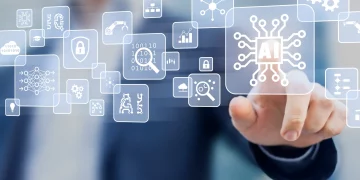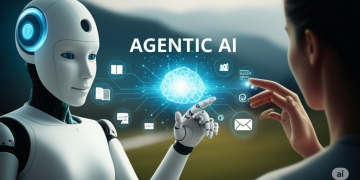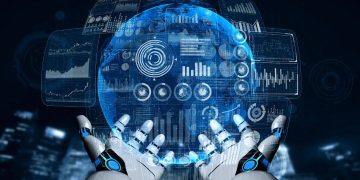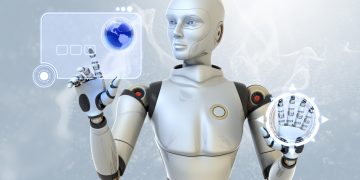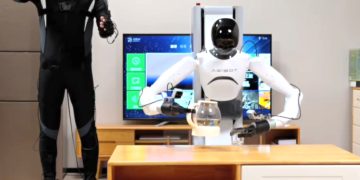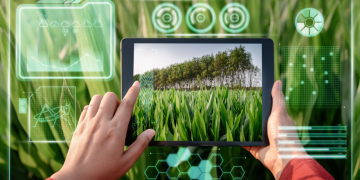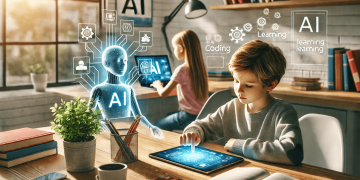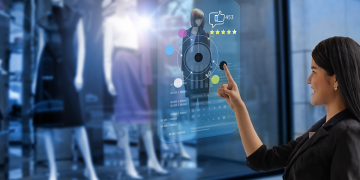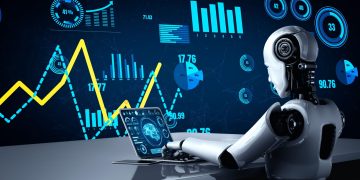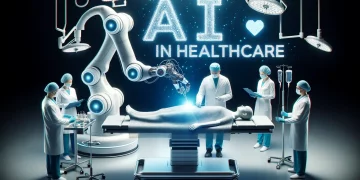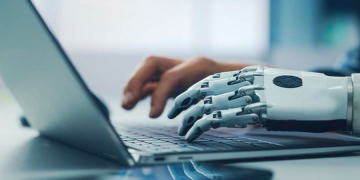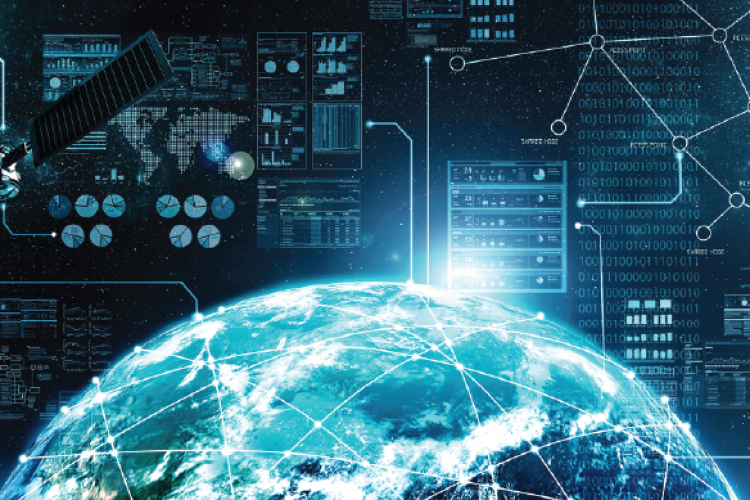The landscape of autonomous technology has dramatically evolved over the past few years, with Artificial Intelligence (AI) at the forefront of this transformation. From self-driving cars to unmanned aerial systems (UAS), AI has enabled the development of autonomous systems that have the potential to revolutionize industries, enhance safety, and change the way we live and work. In this article, we explore the latest innovations in AI-powered autonomous systems, examining their capabilities, applications, and future prospects.
1. The Rise of Autonomous Systems
Autonomous systems are machines or vehicles that operate without human intervention, relying on AI algorithms, sensors, and data to make real-time decisions. These systems can be broadly classified into two categories: autonomous vehicles (self-driving cars) and unmanned aerial systems (drones). Both types of systems use AI to navigate, process sensor data, and adapt to changing environments.
The idea of autonomous vehicles has been around for decades, but it was the recent breakthroughs in AI and machine learning that have propelled this technology to new heights. Today, self-driving cars and drones are rapidly advancing, bringing us closer to a future where autonomous systems are integrated into everyday life.
2. AI in Self-Driving Cars: A Game Changer in Transportation
Self-driving cars, also known as autonomous vehicles (AVs), have garnered significant attention due to their potential to reshape transportation. AI plays a crucial role in enabling these vehicles to operate safely and efficiently without human input. The technology behind self-driving cars involves several key AI components, including:
a) Perception Systems
Perception systems are the backbone of autonomous vehicles, allowing them to “see” and understand the environment around them. These systems rely on a combination of sensors such as LIDAR (Light Detection and Ranging), radar, cameras, and ultrasonic sensors to detect obstacles, pedestrians, other vehicles, and road signs. AI algorithms process this data in real-time to create a detailed map of the car’s surroundings.
Through deep learning models, these perception systems can identify objects, recognize traffic signals, and understand the movement of other road users, which enables the vehicle to make informed decisions about its path and speed.
b) Decision-Making and Path Planning
AI-driven decision-making systems use the information gathered by perception systems to make safe driving decisions. Path planning involves determining the best route, calculating the optimal speed, and choosing the safest path based on traffic conditions, road layout, and potential hazards. Machine learning algorithms are used to continuously improve decision-making models, ensuring that the vehicle can respond effectively to new and unforeseen situations, such as sudden stops, pedestrians crossing the road, or adverse weather conditions.
c) Sensor Fusion and Localization
Sensor fusion is the process of combining data from various sensors to create a unified understanding of the vehicle’s environment. By fusing LIDAR, radar, and camera data, AI algorithms can improve the accuracy of the vehicle’s localization, ensuring that it knows its exact position on the road at all times. This precise localization is crucial for safe navigation and for avoiding collisions.
Moreover, AI models are trained to handle complex scenarios, such as merging lanes, navigating intersections, or making decisions in dynamic traffic environments, all of which contribute to the development of fully autonomous vehicles.
d) Real-Time Learning and Adaptation
One of the most impressive features of AI-powered autonomous vehicles is their ability to learn from experience. Self-driving cars use real-world data to refine their algorithms and improve performance over time. This real-time learning capability allows these vehicles to adapt to changing road conditions, driver behavior, and environmental factors. As autonomous systems collect more data, their ability to anticipate and respond to various situations becomes more reliable and robust.
3. The Role of Drones in Autonomous Technology
In addition to self-driving cars, drones, or unmanned aerial systems (UAS), have emerged as another key area where AI is enabling autonomy. Drones are increasingly being used for a variety of applications, from delivery services and aerial photography to agriculture and infrastructure inspection. Just like self-driving cars, drones rely on AI to navigate, sense their environment, and make decisions in real-time.
a) Navigation and Obstacle Avoidance
Drones rely on a combination of sensors, including cameras, GPS, LIDAR, and radar, to navigate through the sky and avoid obstacles. AI algorithms are used to process the sensor data and detect obstacles in real-time, allowing the drone to adjust its flight path as needed. For example, if a drone encounters a bird, tree, or building during its flight, the AI system can make instantaneous adjustments to avoid a collision.
Deep learning models enable drones to recognize objects and determine their relative distance and direction, which is crucial for maintaining safe flight paths, especially in dynamic and cluttered environments.
b) Autonomous Delivery Systems
One of the most exciting applications of drones powered by AI is autonomous delivery. Companies such as Amazon, UPS, and Google are exploring the use of drones to deliver goods directly to customers’ doorsteps. These drones are designed to follow predefined flight paths, using AI to identify the fastest and safest routes for delivery.
AI is also crucial for ensuring the safety and efficiency of drone deliveries. The technology allows drones to dynamically reroute based on weather conditions, air traffic, or other factors, ensuring timely and accurate deliveries. Additionally, AI helps drones with automated landing and drop-off, ensuring that packages are delivered to the correct location.
c) Autonomous Agricultural Drones
In the agricultural sector, drones equipped with AI are revolutionizing farming practices. AI-powered drones can monitor crop health, assess soil conditions, and identify pest infestations. These drones are equipped with sensors that gather data, which is then analyzed using AI to make informed decisions about crop treatment and land management.
Autonomous agricultural drones can even apply fertilizers, pesticides, or water to crops in a targeted manner, improving efficiency and reducing waste. The ability of AI-powered drones to perform complex tasks autonomously has the potential to increase crop yields, reduce environmental impact, and lower operational costs for farmers.
d) Inspection and Surveillance Drones
Another significant application of drones is in the inspection and surveillance of infrastructure, such as bridges, power lines, and oil rigs. AI-driven drones are capable of navigating complex environments and performing tasks like visual inspections, capturing high-resolution images, and analyzing data for signs of wear and tear or damage.
AI technologies enable drones to autonomously identify potential issues, such as cracks in structures or corrosion, without human intervention. This not only improves the accuracy of inspections but also enhances safety by reducing the need for human workers to perform hazardous tasks in dangerous environments.
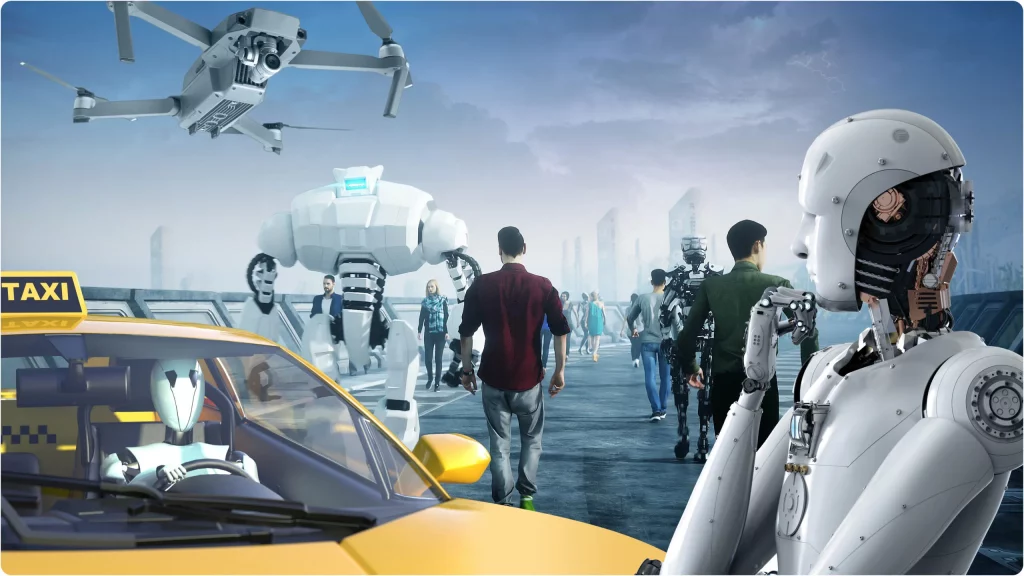
4. The Future of AI-Powered Autonomous Systems
As AI technology continues to advance, the capabilities of autonomous systems are expected to grow exponentially. The following are some potential future developments that will shape the next generation of AI-powered autonomous systems:
a) Fully Autonomous Transportation Networks
While self-driving cars are still in the testing and development phases, the future of AI-powered autonomous systems could include fully autonomous transportation networks. These networks may include not only self-driving cars but also buses, trucks, and delivery vehicles that work together in a coordinated, AI-powered system. Autonomous vehicles could communicate with each other in real-time to optimize traffic flow, reduce accidents, and ensure smooth, efficient transportation.
b) Advanced AI for Drone Swarms
In the future, drone swarms could be deployed to perform large-scale tasks, such as search and rescue operations, environmental monitoring, and disaster response. By utilizing advanced AI algorithms, drone swarms could work together autonomously to cover vast areas, communicate with each other, and coordinate actions without human intervention. This could be particularly useful in situations where human access is limited, such as during natural disasters or in hazardous environments.
c) Integration with Smart Cities
AI-powered autonomous systems are likely to be integrated into the infrastructure of smart cities. Autonomous vehicles, drones, and other AI-driven systems could work together to manage traffic, deliver goods, monitor public safety, and provide services in real-time. This interconnected ecosystem would enhance the quality of life for residents, improve efficiency, and reduce environmental impact.
5. Challenges and Ethical Considerations
Despite the tremendous potential of AI-powered autonomous systems, there are several challenges and ethical considerations that need to be addressed:
a) Safety and Reliability
Ensuring the safety and reliability of autonomous vehicles and drones is paramount. AI systems must be able to operate under a wide range of conditions and handle unforeseen scenarios effectively. Rigorous testing, validation, and regulation are required to ensure that these systems are safe for use on roads and in the air.
b) Ethical Implications of Autonomy
As autonomous systems become more widespread, ethical concerns will continue to arise. For example, in the case of self-driving cars, how should the vehicle make decisions in the event of an unavoidable accident? These ethical dilemmas, often referred to as “the trolley problem,” highlight the need for clear guidelines and regulations to govern the decision-making processes of AI-driven systems.
c) Privacy and Security
The use of autonomous systems also raises concerns about privacy and security. AI-powered drones and vehicles rely on sensors and data collection, which can be vulnerable to hacking or misuse. Safeguarding user data, ensuring the security of autonomous systems, and protecting individual privacy will be critical as these technologies continue to evolve.
6. Conclusion
AI-powered autonomous systems, from self-driving cars to drones, are transforming industries and offering new possibilities for the future. With advancements in perception, decision-making, and real-time learning, these technologies are poised to revolutionize transportation, delivery, agriculture, and more. As autonomous systems become more integrated into daily life, it is crucial to address safety, ethical, and regulatory challenges to ensure that these innovations benefit society as a whole. The future of AI-powered autonomous systems holds immense promise, with the potential to reshape how we live, work, and interact with technology.





